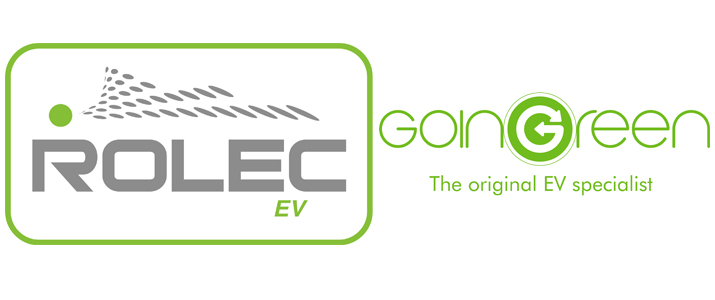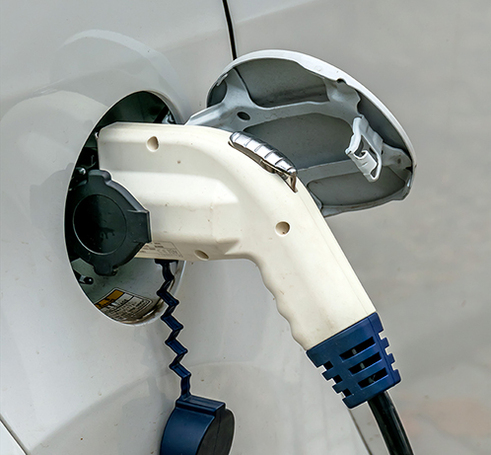
DOMESTIC ELECTRIC CHARGE POINTS
EV Life Ltd are OLEV accredited and approved installers. We are proud to be regional installers for Pod Point, Rolec and Charge Master – you can find out more information on these products by visiting their brand pages.



Your charging requirements will depend on the vehicle you wish to charge, and the location of the charge point installation at your property.
We are currently working on a scheme funded by OLEV (the Office for Low Emission Vehicles), to install Charging Stations for individuals who have an Electric or Hybryd, under the scheme the Government funds 75% of the cost of a home charge-point and associated equipment as well as the cost of installation. Usually, the remaining 25% of the cost should be met by the householder, however, there may be circumstances when other third parties offer to meet this cost, such as vehicle manufacturers, energy companies and charge-point manufacturers.
EV Charge Point
Ourselves or one of our partnered charge point suppliers will claim the 75% or £500 grant funding on your behalf. In most cases, we can pay the remaining 25% of the total cost allowing for a subsidised installation. This is based on the following criteria:
- There is a space way within the consmer unit to accommodate the circuit fuse.
- Adequate main earth, gas, water bonding is in place.
- Cable length not more than 10 metres from main consumer unit.
- There is a good quality phone signal at proposed site of installation.
- Data usage to be collected.
To find out about OLEV funded EV Charge Points, click this information box to be directed to the government scheme webpage.
CHARGE POINT HOW DO I ARRANGE AN INSTALLATION?
Simply contact us we will walk you through the process from start to finish. We will take care of all the administration and appropriate notifications. Allowing for a stress free installation.
When you are considering buying an Electric Vehicle it can be very confusing; understanding how the car charges, power ratings, cable types and connectors. EV Life are here to help with all of your questions.
CHARGE POINT DIFFERENT VEHICLE TYPES:
Electric vehicle (EV) is the umbrella term for any vehicle that is powered, in part or in full, by a battery that can be directly plugged into mains electricity.
Pure-Electric Vehicle (Pure-EV) – A vehicle powered solely by a battery charged from mains electricity. Currently, typical pure-electric cars have a range of approximately 100 miles but are improving all the time.
Plug-In Hybrid Electric Vehicle (PHEV) – A vehicle with a plug-in battery and an internal combustion engine (ICE). Typical PHEVs will have a pure-electric range of over 10 miles. After the pure-electric range is utilised, the vehicle reverts to the benefits of full hybrid capability (utilising both battery power and ICE) without range compromise.
Extended-Range Electric Vehicle (E-REV) – A vehicle powered by a battery with an ICE powered generator on board. E-REV’s are like pure-EV’s but with a shorter battery range of around 40 miles. Range is extended by an on board generator providing many additional miles of mobility. With an E-REV the vehicle is still always electrically driven.
Hybrid – A hybrid vehicle is powered by, either or both, a battery and an ICE. The power source is selected automatically by the vehicle, depending on speed, engine load and battery charge level. This battery cannot be plugged in; charge is maintained by regenerative braking supplemented by ICE generated power. A number of fuels can power hybrid ICE’s, including petrol, diesel, Compressed Natural Gas, Liquid Petroleum Gas and other alternative fuels.When you are considering buying an Electric Vehicle it can be very confusing; understanding how the car charges, power ratings, cable types and connectors. EV Life are here to help with all of your questions.
CHARGE POINT MODELS OF CHARGING:
There are Four mode options available in the UK(as defined in the standard BS EN 61851-1) for the charging of electric vehicles. The consumers decision will be determined by a range of factors including the vehicle type, desired speed of charge, data analysis and UK wiring regulations. The following set of recommendations is based on the current standards.
There are 4 key modes for the charging of an electric vehicle, as summarised below:
Mode 1 charging: Non-dedicated circuit and socket-outlet, charging without cable-incorporated RCD protection
- Mode 1 should not be used for the charging of an electric vehicle because RCD protection, which is necessary for a safe charging system, cannot be guaranteed at all outlets .
Mode 2 charging: Non-dedicated circuit and socket-outlet, charging with cable-incorporated RCD protection
- Mode 2 can be used for the charging of an electric vehicle in locations where there is no dedicated charging installation (Mode 3 or 4, see below), and for use by legacy vehicles. Mode 2 cables are provided with an in-cable control box (including RCD), set and adjusted to a specific charging power, and guarantee the provision of RCD protection during charging.
Mode 3 charging: Fixed and dedicated socket-outlet
- Mode 3 can be used for the charging of an electric vehicle and this is the preferred solution in the long term. Mode 3 chargers are defined in 2 configurations, either with a tethered cable or a dedicated socket-outlet.
Mode 4 charging: Dedicated rapid charging, DC supply
- Mode 4 is a necessary service function for rapid charging, for use as roadside assistance and service station charging on long journeys.
Types of Charging and Standard Charging Times
- Slow – using a standard 13 amp supply (10 – 12 hours for full charge)
- Slow – using a 16 amp supply (6 – 8 hours for full charge)
- Fast – uses single or three phase 32 amp supply (3 – 4 hours for full charge)
- Rapid – uses a Direct Current supply (typically 80% charge in 30 mins)

